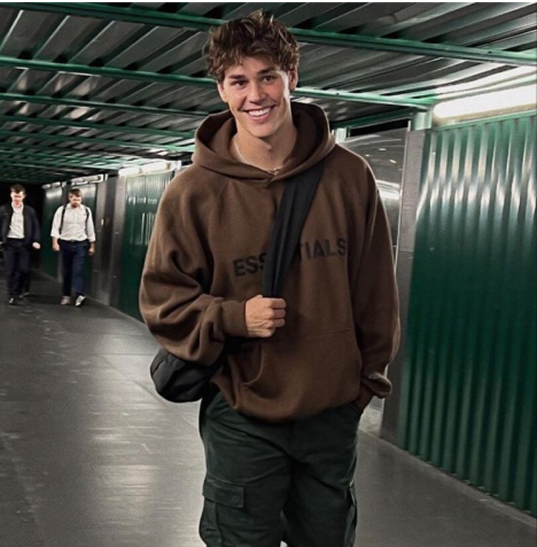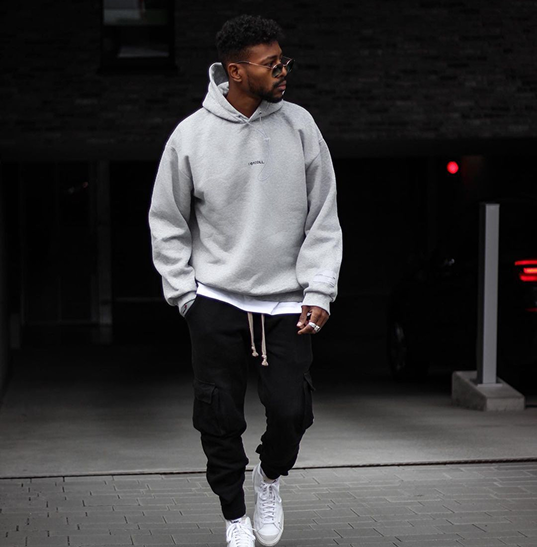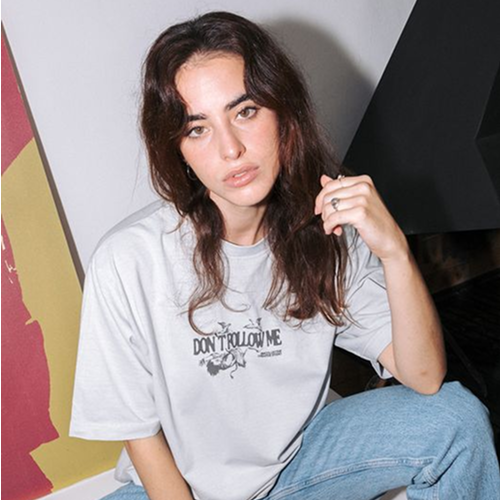Introduction: From Sweat to Symbol
The hoodie began as a piece of pure function — a cotton armor against cold factory floors and open-air football fields. Born in the 1930s, its purpose was practical: to keep athletes and laborers warm. Yet over time, it has transformed into something far greater — a garment that transcends utility, evolving into an emblem of rebellion, comfort, anonymity, and artistry.
Today, the hoodie is no longer confined to locker rooms or gym bags. It has marched confidently into art galleries, fashion runways, and even corporate offices. Designers from Balenciaga to Fear of God, from Off-White to Louis Vuitton, have all taken this humble pullover and turned it into a cultural manifesto. The hoodie is not just a garment anymore — it’s an evolving canvas of identity.
This is the story of how a once simple sportswear staple became a work of art — the artistic rebirth of the hoodie.
- A Brief Origin Story
The earliest versions of the hoodie trace back to medieval Europe, where monks wore cowled robes for warmth and modesty. However, the modern hoodie as we know it was introduced in the 1930s by Champion Products, designed specifically for cold-storage warehouse workers in upstate New York.
By the 1970s, the hoodie had found new meaning on the streets of New York City — a symbol of rebellion and street survival. Hip-hop artists, graffiti writers, and skateboarders embraced it for both comfort and concealment. It became a visual shorthand for youth culture and defiance.
By the 2000s, the hoodie’s narrative expanded once again — from “dangerous” to “desirable.” As celebrities, designers, and cultural icons adopted it, the hoodie’s social context shifted dramatically. Now it was seen on stages, in films, and even at art openings.
- The Transformation of Function
The hoodie’s evolution mirrors the transformation of society’s relationship with fashion itself. What was once viewed as “informal” or “unfit” for certain settings has been elevated by designers who understand its cultural gravity.
Designers like Demna Gvasalia (Balenciaga) and Virgil Abloh (Off-White, Louis Vuitton) saw the hoodie as a medium — a blank space to project ideas about modernity, irony, and power. The silhouette became sharper, heavier, oversized — as if exaggeration itself was a statement.
A hoodie that once cost $20 at a local sports store now appears in art galleries with price tags in the thousands. But what people are buying isn’t just fabric — it’s the story, the transformation, and the emotion sewn into the seams.
- The Hoodie as an Artistic Medium
The hoodie’s surface — plain, front-and-center — is inherently expressive. It’s a wearable canvas. Artists and designers use it to communicate political messages, personal struggles, and social commentary.
Take for example the “Rest in Power: Trayvon Martin” exhibitions — where hoodies became central to visual memorials and conversations about racial profiling and identity. The hoodie here wasn’t about fashion — it was about visibility, justice, and remembrance.
On another spectrum, contemporary designers like Heron Preston or A-Cold-Wall* treat the hoodie as industrial art. Their hoodies incorporate text, reflective material, or construction-like aesthetics that make them resemble sculptures rather than garments.
Even visual artists such as Banksy have employed hooded figures as anonymous subjects — using the silhouette as a metaphor for rebellion and invisibility.
The hoodie, it seems, invites projection — whether political, personal, or aesthetic. It can be both armor and confession.
- The Gallery Moment
When the hoodie stepped into the art gallery, it wasn’t an accident. It was a cultural inevitability.
In 2017, an installation at London’s Somerset House, titled The Hoodie, presented the garment as an artifact of our times. From sportswear to subculture to haute couture, the exhibition explored its layered meanings. The hoodie, displayed behind glass, forced viewers to reconsider its context.
Was it still streetwear? Or was it sculpture?
That same year, Balenciaga’s Fall/Winter show turned hoodies into oversized luxury statements paired with tailoring. The message was clear: comfort and power could coexist.
Meanwhile, smaller brands like John Elliott, Represent, and Aimé Leon Dore kept the hoodie rooted in reality — focusing on craftsmanship, texture, and minimalism. Their approach was less about shock and more about the perfection of simplicity.
This duality — art and accessibility — is what keeps the hoodie culturally relevant. It belongs equally to the gallery and the sidewalk.
- Streetwear’s Artistic Maturity
The hoodie’s ascension coincides with streetwear’s artistic coming-of-age. Once dismissed as “casual wear,” streetwear has become the dominant language of global fashion. The hoodie is its grammar — versatile, recognizable, endlessly reinterpretable.
When artists like Kanye West launched Yeezy, or Pharrell Williams reimagined the hoodie for Louis Vuitton, they weren’t just selling clothes — they were redefining the boundaries of creativity.
The hoodie became art in motion. Its appeal lies in how it bridges spaces — from gym to gallery, from underground to elite, from everyday to eternal.
- The Emotional Power of Comfort
Art isn’t just visual; it’s emotional. And so is fashion.
The hoodie resonates because it evokes safety, nostalgia, and belonging. It’s what people wear when they want to feel like themselves — unpolished, unguarded, and human.
Artists like Billie Eilish have popularized the oversized hoodie as both protection and statement — an aesthetic of privacy in a world obsessed with exposure. The garment has become a way to reclaim personal space.
That’s what makes it art — not the brand name or the gallery lighting, but the emotion it carries.
- The Craft Behind the Canvas
There’s a quiet craftsmanship behind the modern hoodie that mirrors the work of an artist preparing a canvas.
Premium materials like loopback French terry, organic cotton, or recycled fleece elevate the tactile experience. Details — double stitching, tonal embroidery, garment dyeing — are the subtle brushstrokes of modern fashion artisans.
Brands like Reigning Champ, Les Tien, and Pangaia are redefining the hoodie not through loud design but through sensory refinement. The way the fabric drapes, the color fades, the hood frames the face — each detail becomes a composition.
When an item this simple is treated with such care, it transcends clothing. It becomes wearable art.
- Social Commentary Through Fabric
Just as painters use canvases to question their world, designers use hoodies to comment on theirs.
The hoodie reflects our current cultural contradictions: we crave both individuality and anonymity, both luxury and authenticity. It’s a paradox in cotton form.
For instance, Vetements’ DHL hoodie blurred the line between fashion and satire — questioning capitalism while profiting from it. Similarly, Fear of God’s Essentials line turns minimalism into status, asking: can simplicity be exclusive?
Each of these interpretations contributes to the hoodie’s expanding narrative — one that’s deeply intertwined with modern art and culture.
- The Future of the Hoodie
Where does the hoodie go from here?
As technology, sustainability, and culture evolve, the hoodie will adapt — but it will likely never lose its symbolic power. Smart fabrics, biodegradable dyes, and AI-generated patterns may redefine its materiality, but not its meaning.
The hoodie has become too ingrained — too human — to disappear.
Perhaps its next evolution will be even more personal: garments designed to reflect emotion, react to touch, or adapt to mood. The line between fashion and art, between human and object, will blur even further.



